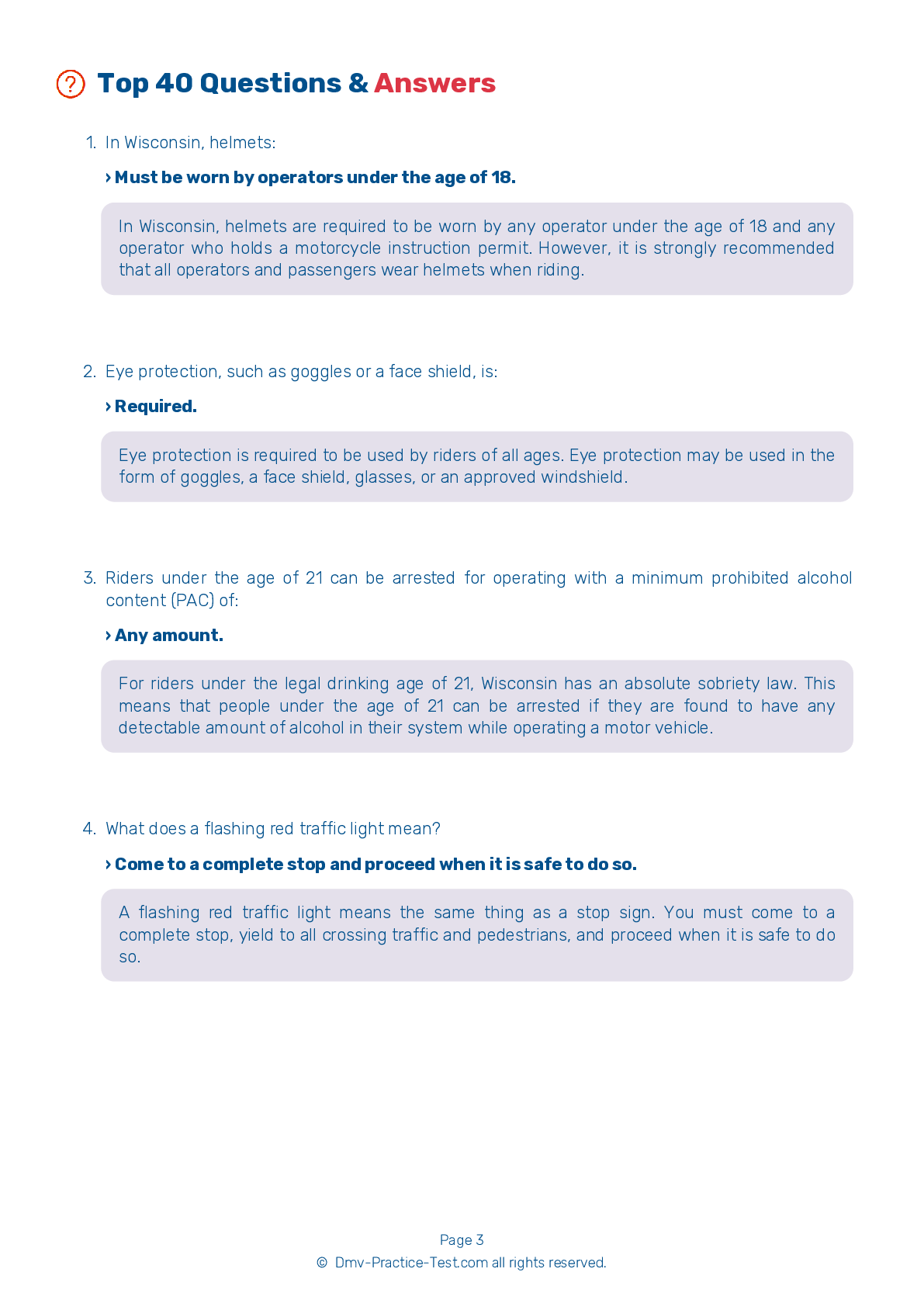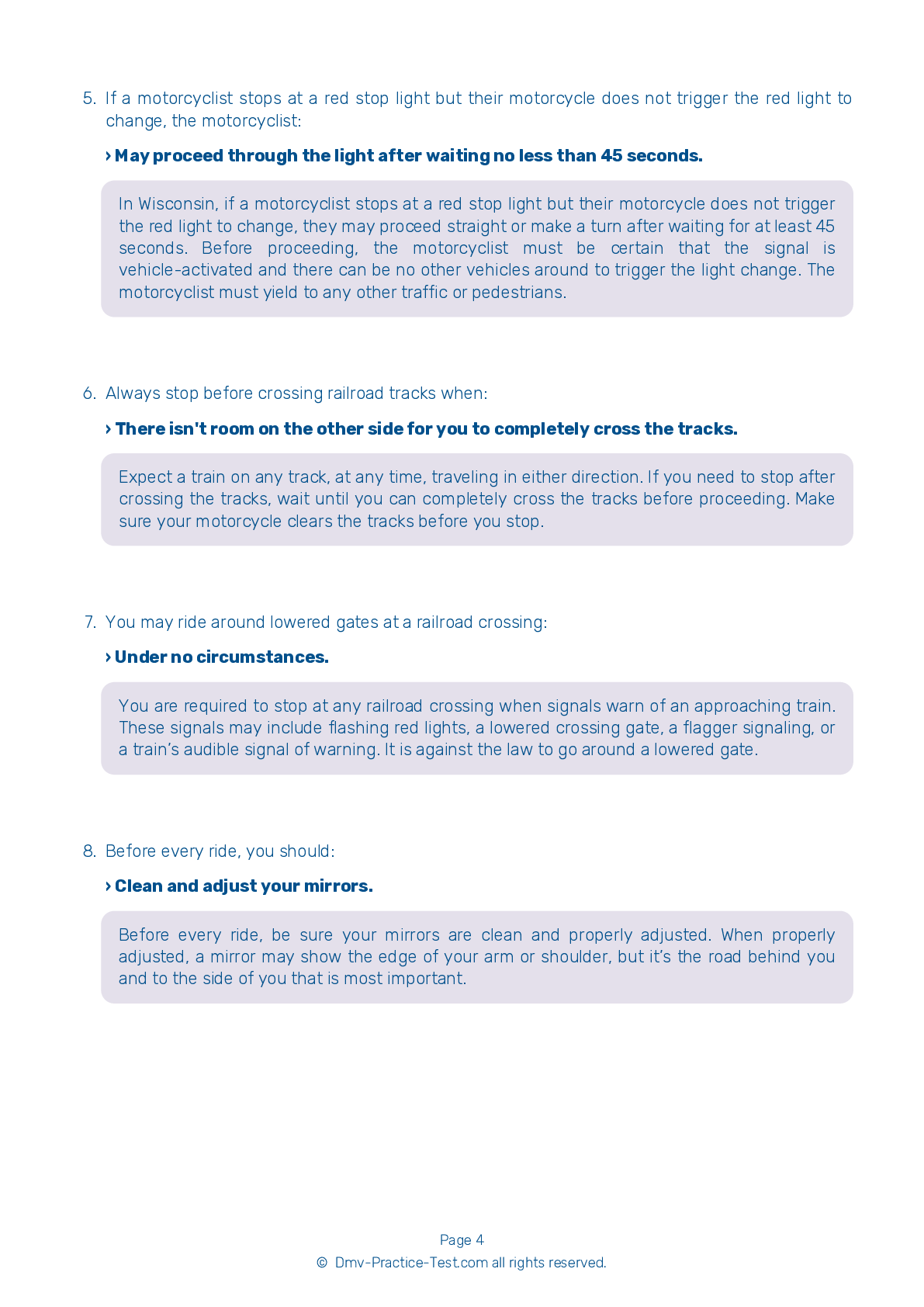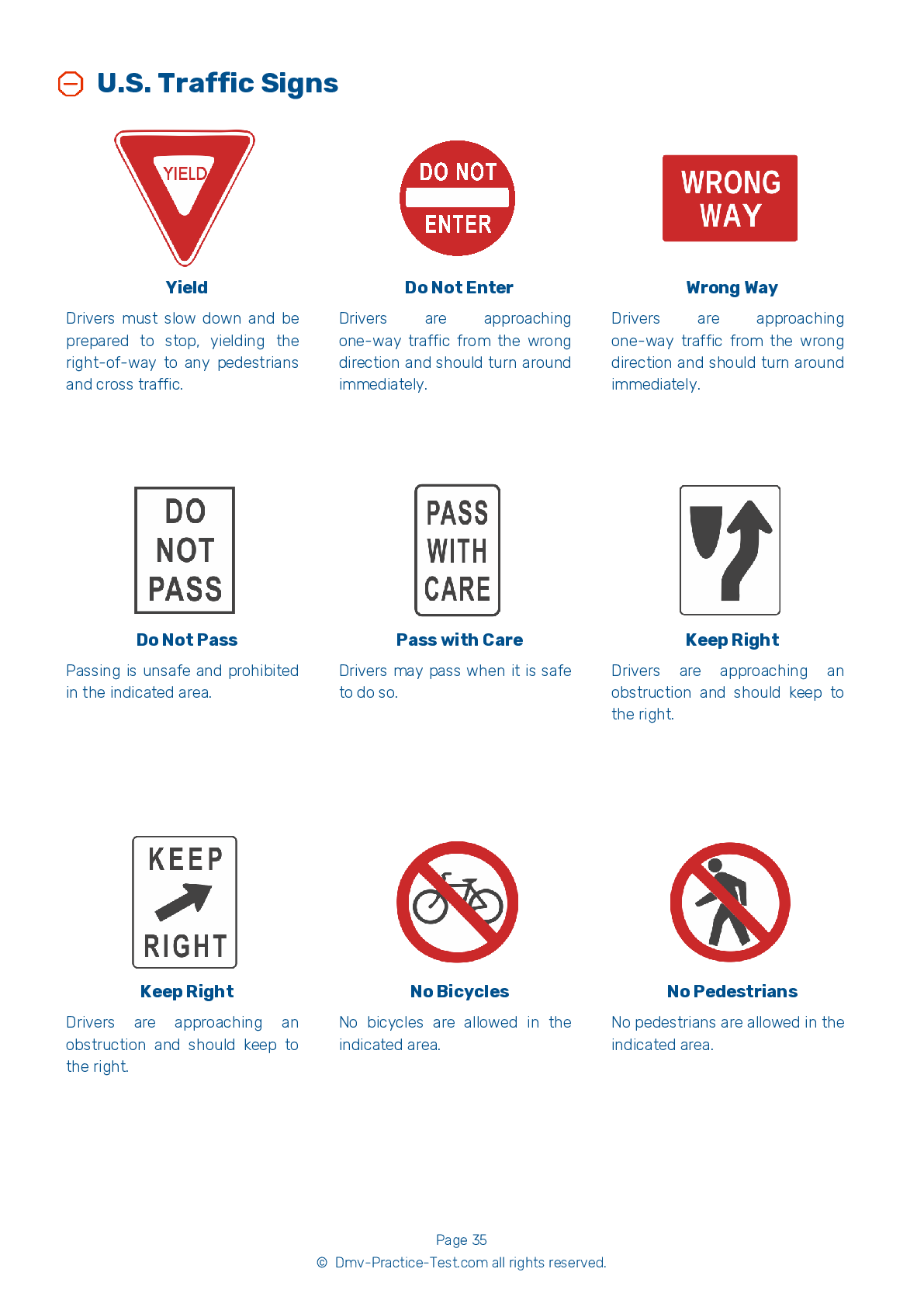Motorcycle Test | License WI 2025 | FREE Online Practice! #4 Page 2 of 5
Take this FREE motorcycle test (license in WI 2025) to check your knowledge of the road rules. To improve your results, download a motorcycle handbook online, study theory, and practice for free on our website. Still worried about how to get a motorcycle license in Wisconsin in 2025? Check our website for more sample tests, train as much as possible, and boost your grades!
9 . Which of the following is a poor reason to sound your horn?
It is a good idea to sound your horn before riding past a vehicle or pedestrian that may move into your lane. If you see a driver in an adjacent lane driving too closely to the vehicle ahead of them, you may assume that they want to pass and may cut in front of you to do so. If you see a person in the driver's seat of a parked car, or if you see a pedestrian or bicyclist in the street, it is a good idea to sound your horn as you pass.
10 . Maximum straight-line braking is done by:
On a straightaway, you can stop in the shortest distance by using both brakes. Try to avoid locking either brake.
12 . Smoothly downshifting on motorcycles:
Engine braking by smoothly downshifting can be a useful option for motorcyclists. If you choose to engine brake, apply your brake lights separately to let other drivers know that you are slowing down.
13 . One problem with a motorcyclist riding directly next to another vehicle is that:
Riding alongside another vehicle is dangerous because the vehicle could veer into your lane and sideswipe you. Additionally, the vehicle could block your escape route if a hazard arises.
14 . To prevent fatigue on a long trip, you should:
To reduce the chances of becoming fatigued while riding, dress to protect yourself against tiring weather conditions, such as wind and rain. Limit yourself to no more than about six hours of riding per day and stop for a break at least once every two hours. Avoid taking artificial stimulants since you may experience extreme fatigue when they start to wear off.
15 . The gearshift is located:
The gearshift lever of a motorcycle is located in front of the left footrest and is operated by the rider's left foot.
See the exact questions that will be on the 2025 Wisconsin DMV exam.
99.2% of people who use the cheat sheet pass the FIRST TIME
Jeneen was tired of paying $5/gallon. She got herself a scooter that required the motorcycle license. She studyed the motorcycle test cheat sheet and passed her test the next day!
Christopher tells us how he knew nothing prior to obtaining the motorcycle study guide, and he only got one question wrong because he clicked on the wrong answer by mistake.




